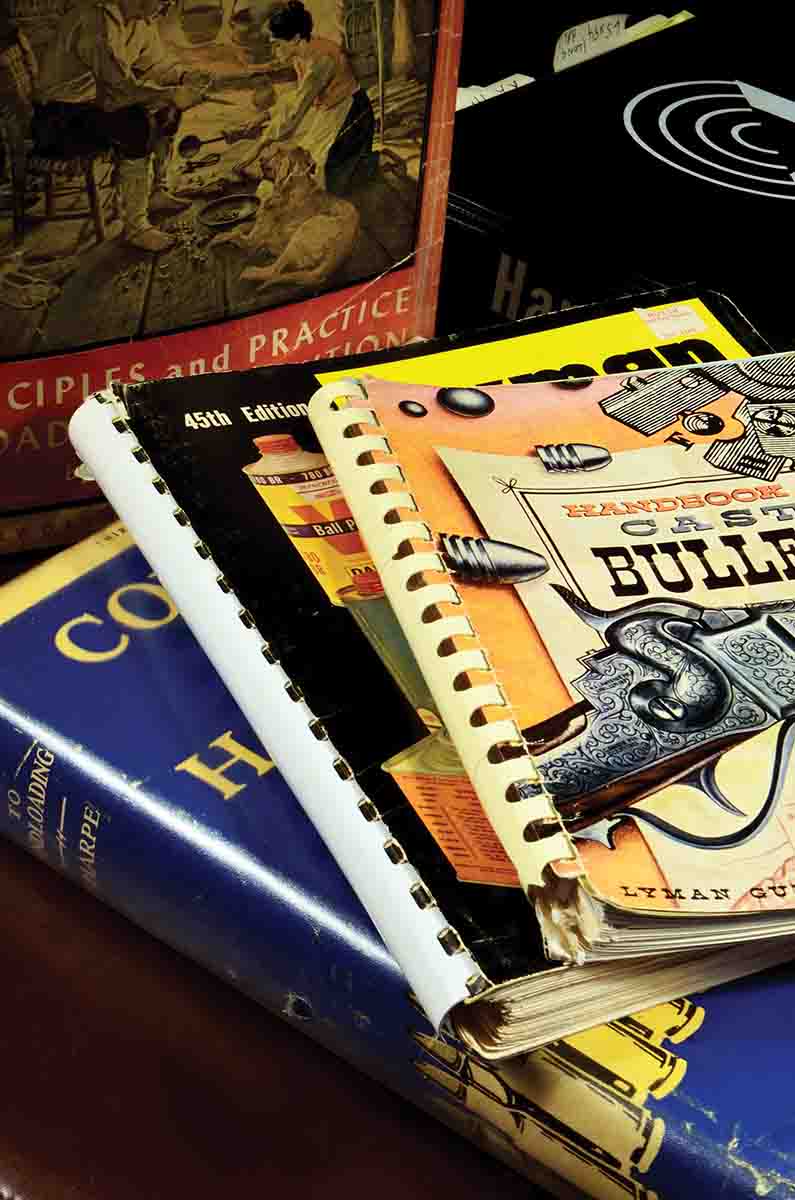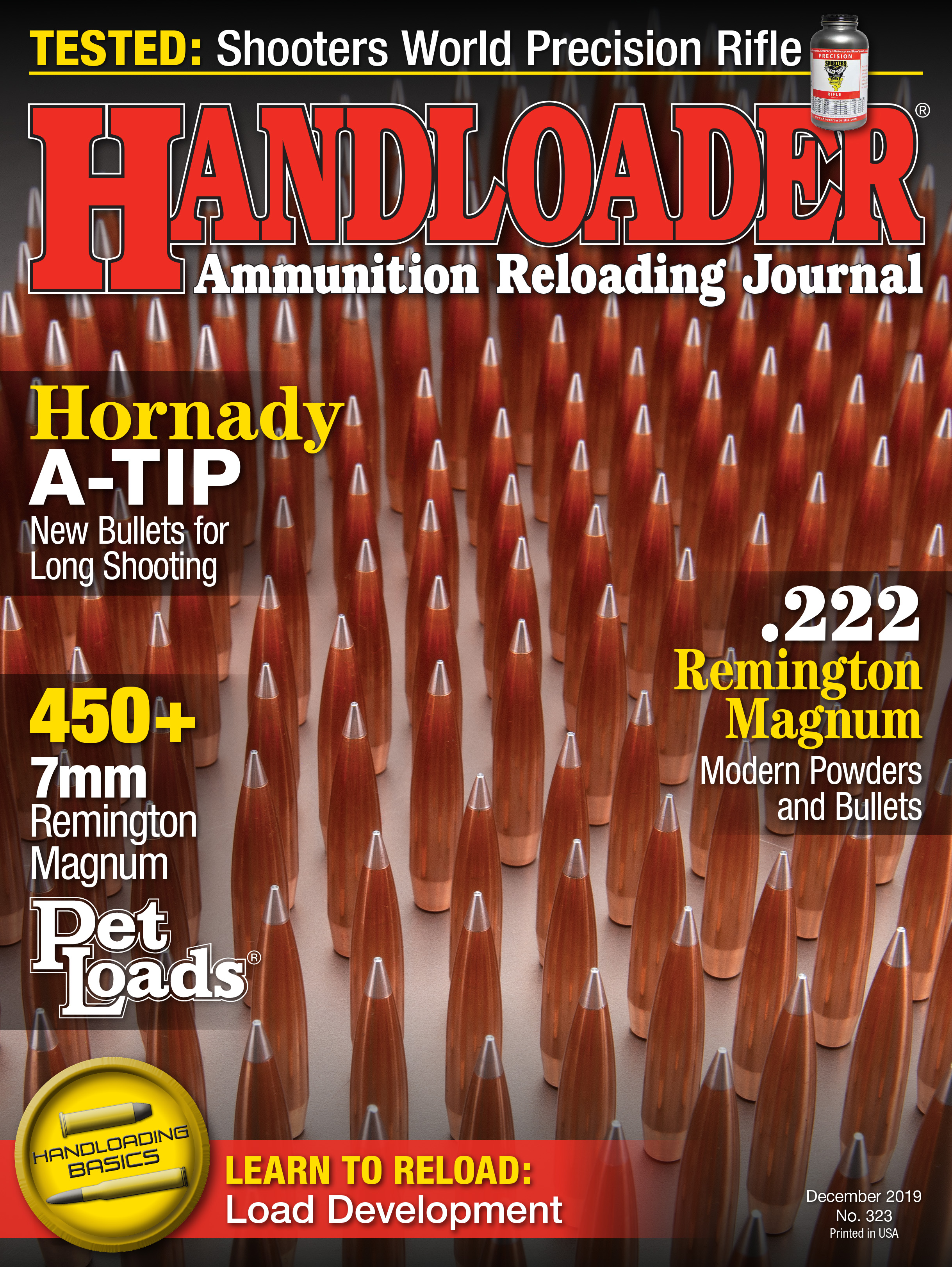In Range
The Handloader's Library
column By: Terry Wieland | December, 19
Handloaders are pack rats. We are also, mostly, bibliophiles. Certainly, anyone who loads for any older rifle, or any older caliber, is likely to have squirreled away volume upon volume of the printed word dealing with his favorite activity.
Over the past century and a half, an immense amount has been written about rifles, pistols, cartridges, gun powders and all the paraphernalia that goes with them. Some of this is obviously quite dated, rendered obsolete by newer printed material. Some, but certainly not all.
It’s a strange quirk of shooting that, quite often, to shoot an old rifle you need to find old information to go with it. If you have

A few years ago, browsing through Graf & Sons’s store in Mexico, Missouri, I met a teenager who was buying the wherewithal to load for a newly acquired .30-06 –his first centerfire rifle. He asked me about this gadget and that one, and whether I had any suggestions. I asked what loading manual he used. “Loading manual? Oh,” he replied, “I’ll just get data off the internet.”
I walked over to the shelf that held the books, picked up a Speer manual, handed it to him and strongly advised he invest in it. Not only that, he should start reading it at page one. He bought it, but whether he followed all my advice, I can’t say. The Graf salesman watched all this with a smile. It was a piece of advice he always gave too, he said, but it didn’t always work.
Not to trash the internet to any undue degree, but the information found on it ranges from good to irresponsible to outright dangerous, and for a newcomer it’s very difficult to distinguish one from the other.
I never, never, use a load given by a stranger without cross-checking it three or four different ways. The thing is, to do that, you need a lot of experience – almost a sixth sense to tell you what load, with what powder, may just not work well. Beginning handloaders and even many guys with years under their belt, may not be able to do that.
All right then, what books should a serious handloader who works with a wide variety of rifles and pistols, old and new, have on his shelf? Herewith, the list:
1) A new general manual – Speer is my favorite, and Lyman is good too.
2) A manual for specific preferred bullets such as Hornady and Berger, or powders (Hodgdon, Western and Vihtavuori.)
3) Complete Guide to Handloading by Phil Sharpe, the last and final edition with supplement.
4) Principles and Practice of Loading Ammunition by Earl Naramore.
5) Lyman Reloading Handbook 45th Edition (1969).
6) Game Loads and Practical Ballistics for the American Hunter by Bob Hagel.
The last book listed is not as well-known as Sharpe’s and is long out of print, but it’s invaluable for anyone loading ammunition for big-game hunting. Especially, it deals with bullet performance –terminal ballistics as opposed to internal or external – and this is an area to which any hunter needs to pay special attention.
Numbers one and two are pretty self-explanatory. A new handloader could get by drawing data from Hodgdon’s on-line Reloading Data Center, which is absolutely trustworthy (as is Wolfe Publishing’s LoadData.com), but there is a difference between information (data) and understanding. As well, of course, the Hodgdon site covers only Hodgdon powders (including IMR and Winchester).
The reason I advised my young acquaintance mentioned above to start reading at page one of his new manual was to get a thorough grounding not only in what to do and how to do it, but why. The “why” is in many ways more important than the “what” and the “how” when it comes to preserving one’s eyes, fingers and firearms. Experience is obviously the best teacher, but the trick is to gain the experience properly, and experience alone will not explain why one should approach Bullseye with the same caution one would a black mamba.
Sharpe and Naramore are valuable for the pure history of everything from the development of primers and priming compounds to the lineage of individual powders, to coping with potential corrosion. Modern primers and powders are largely free of corrosion problems, but it pays to be ever alert when using new combinations. The flood of military surplus ammunition and components now found in the U.S. can be a source of seriously unpleasant surprises. Understanding ammunition and its past is the key to avoiding these.
A handloader may wonder at the inclusion of the Lyman manual, which was published in 1969. It actually represents a whole class of old manuals, including Lyman, Ideal and the early Speer manuals. These include many cartridges no longer listed in new manuals. Handloading authority Dean Grennell referred to these as the “intrepid” manuals – the ones that listed loads much hotter than found today, in our era of chronographs, pressure barrels, SAAMI standards and (not least) liability litigation.
This is not to suggest following their recommendations without question. Quite the contrary, it pays to be extremely cautious in following loads from any manual, old or new, but especially old. Some of Phil Sharpe’s recommendations make my blood run cold. Again, though, the information is useful. The Lyman manual includes a section at the back for older cartridges, including the .22 High Power, .30 and .32 Remington, the .351 Winchester SL and several others. This was invaluable years ago when there was no data extant for the .32-40.
Two other series that contain the equivalent of several university degrees’ worth of material are the seemingly never-ending Cartridges of the World (COTW) series and the relatively short-lived Handloader’s Digest (seven editions). I have ten editions of COTW on the shelf. The early ones are the most valuable, but I use them all. Originated by Frank C. Barnes and John T. Amber in 1965, it was a valiant attempt to document every cartridge ever made. It did not, of course, and there are mistakes, but it provided the starting point for subsequent works. Wherever possible, Barnes tried to provide a starting load with a modern powder for anything that could be reloaded, and this alone is worth the price.
If you are a pistol shooter, then the classic two-volume Pistol and Revolver Cartridges (White and Munhall) is a must. And for handloaders who branch out into collecting but also like to shoot old rifles of all descriptions, then George Hoyem’s seven-volume History and Development of Small Arms Ammunition is invaluable, if for no other reason than determining, exactly, what cartridge you are working with.
Once you get into fashioning brass to fit an obsolete rifle, The Handloader’s Manual of Cartridge Conversions by John J. Donnelly took up where Maj. George C. Nonte (he of the waxed moustache) left off in his work, Cartridge Conversions. These last are specialty books, and not everyone is going to want to produce brass to shoot in an 8mm Rast-Gasser or embark on hunting with a .450 Express No. 2.
Finally, a book I acquired more or less by accident, but now would not be without, is the Lyman Handbook of Cast Bullets published in 1958. It is the successor to the long series of Ideal handbooks, and it shows many old Lyman bullet designs and their uses. Some old rifles and handguns require specific cast bullets if they are going to work at all, and knowing what Lyman used to make is very helpful when searching for a mould, or having one made.


